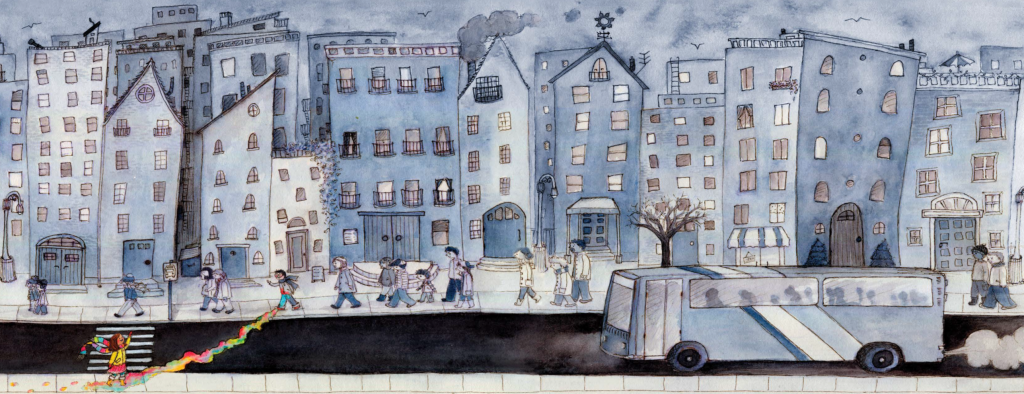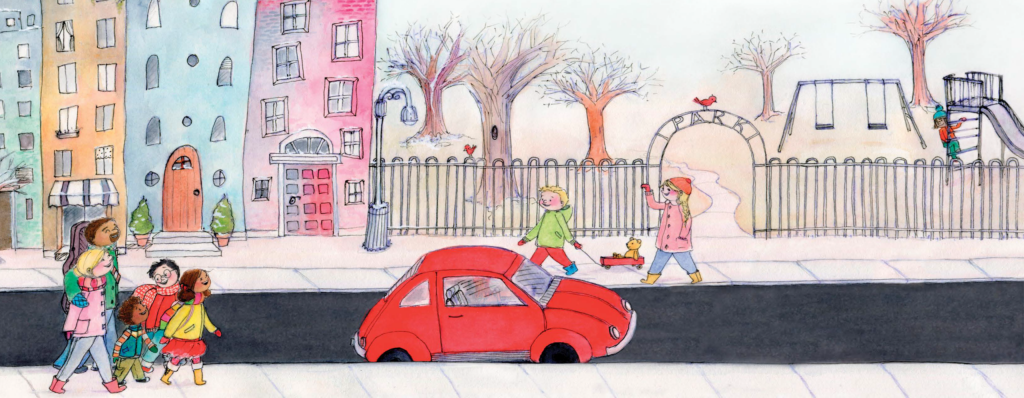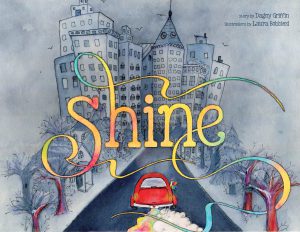May 11, 2020
How to Read a Wordless Book
How to Read a Wordless Book

By Dagny Griffin, author of Shine
Shine is a book for young children about the impact one person can have on their world. It is also a wordless picture book, or what I like to refer to as a silent storyteller. It speaks no language and every language at once, and its silence gives young children something they can excel at before their time: “reading” a book. How grown up it is for a child who can’t read (or can’t read well) to open a book and read anyway, with none of the restraint of troublesome letters and sounds! Of course, the letters and sounds will come—but even then, there is something delightful about giving voice to a silent story, even for adults.
Why a wordless book?
– It helps a child translate the represented ideas into words.
– It allows a child to independently discover the book’s message.
– It sharpens a child’s cognitive skills.
– It builds a child’s storytelling ability.
– It gives a child more (as Anne of Green Gables would say) “scope for the imagination.”

Aside from a child’s ability to independently read a wordless picture book, Shine also makes for a wonderfully interactive experience. A grown-up can easily tell the story to a child. A more entertaining experience, however, would be to allow the child to be the storyteller while you are the eager listener! Given the opportunity, many children will take center stage and tell their version with no problem. But for very young or shy children, or in a room full of children, here are some pointers to help draw them out:
– With your child snuggled on your lap or in front of a class on a reading rug, let a child hold the book (if able) and show the pictures.
– Be sure to read the cover so the child(ren) can have some context for the story.
– Ask lots of open-ended questions to get the imagination flowing.
– Have the child(ren) make up a name for each main character. You could also point to characters and ask, “What is she doing?” or “Why is he doing that?”
– If the child(ren) begin to offer narrative freely, simplify the questions to “Then what happened?” with each new page.
– Allow the child(ren) to tell the story and make assumptions, whether you agree with the interpretation or not. Comments like, “It could be” or “That’s an interesting idea” will keep them engaged, even if their version of the story isn’t spot on.
– Follow up with questions. These will help the child(ren) further explore the idea of influencing their world.
Most of all, have fun immersing yourself and your child or classroom into Shine, and may it help us all shine brighter!
Shine is the charming, wordless story of eight-year-old Mia, whose love and joy flow from her in beautiful, swirling color. Each day she walks through the dreary, cheerless city, but as Mia shares her love with the people she encounters, the city slowly transforms until everything around her is glowing with vibrant color.
Shine is a testament to the power one person has to change the world and influence the people around them.

Dagny Griffin, a freelance editor and writer, has worked on books for several small Christian publishers and many independent authors, but Shine is her first book as an author. She holds a bachelor of arts degree in English with double minor concentrations in creative writing and art from the University of Tulsa. Before freelancing, Dagny worked as a composition instructor at Tulsa Community College and as a project manager and writer for an international ministry.
Dagny’s hobbies throughout the years point back to three things: writing, teaching, and children. Highlights include five and a half years as coleader of a writers’ group and sixteen years as a youth group leader. Thirteen of those years were with a sizable girl’s group, ages five to sixteen. Now she works with a prison ministry, teaching people about the love of God.




